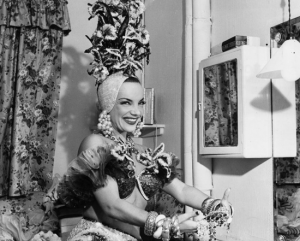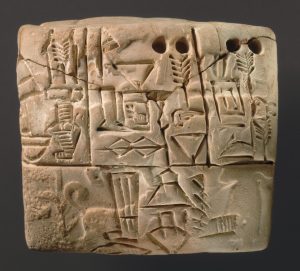It was the year 1953, in the month of May. Two men stared at the perilous journey ahead that few men dared to travel. They were willing to rest the fate of their lives in the frozen hands of Mother Earth. Would you have the nerves of steel that Edmund Hillary and Tenzing Norgay had as they faced the spine-chilling Mount Everest?
These two men, however, were not the first to attempt the climb. The first attempt to summit Mount Everest was in 1921 by George Leigh Mallory and his team of climbers.1 They had not been able to complete their ascent due to an unforgiving storm. With the determination to reach the summit, where no man had ever stood before, Mallory made a second attempt a year later in 1922. This time, Mallory and his team were able to trek more than 27,000 feet up the behemoth of a mountain! On this climb, several of the Sherpa, people who live on the borders of Nepal and Tibet that are well known for their astounding capabilities in mountaineering, on his team were killed by an avalanche. This was still not enough to satisfy Mallory’s thirst for adventure! Third times the charm, right? Maybe? No? Mallory made his third and final attempt to conquer one of the seven natural wonders of the world in 1924. Except, this time he and his partner, Andrew Irvine, threw all caution out the window and set their minds to reach the top no matter what troubles they faced. To this day, no one knows if they reached the top. After they departed on their trek… they were never seen again.2

Now let’s shift the focus to New Zealand… Auckland, New Zealand to be exact. This is where the soon famous Edmund Hillary resided, passing through life as a beekeeper by day and a mountain climber by night. By the time he attempted the climb of Mount Everest in 1953, he was at the age of thirty-four years, and luckily he had the assistance and camaraderie of a skilled Sherpa, Tenzing Norgay, who was thirty-nine years old.3 Thanks to the thirty years that had passed since Mallory’s attempt, Hillary and Norgay had more advanced climbing equipment than Mallory had, such as more advanced oxygen equipment, a form of portable communication through radio, and clothing that would better suit the environment.4 Although this equipment was not the only things they had that Mallory didn’t. The two had something that is the difference between life and death… a greater sense of caution.

The two departed to accomplish their goal on the 28th of May and managed to climb an astonishing 27,900 feet. Now you’re probably thinking, “Oh, 27,900 feet? Yeah, that’s a little challenging, but I could probably do that.” Sorry to break it to you, but these were no ordinary 27,900 feet. Along the way, Hillary and Norgay faced blinding blizzards, the risk of avalanches, or the risk of falling into an icy abyss, as well as running out of oxygen.5 Another risk that is faced when mountain climbing is altitude sickness. This is what happens when one ascends or descends in altitude too quickly without allowing one’s body to adjust to the different pressures and altitude. It can be life threatening if it is not treated or prevented.
After a long, freezing, and brutal night, the two were able to reach the top of the world at 11:30 a.m on May 29, 1953. This also happened to be the birthday of Tenzing Norgay! Prior to reaching the summit, Hillary climbed his way up a forty-foot rocky ledge and pulled Norgay up by rope. This ledge came to be known as the Hillary Step.
Word spread that the two accomplished the unimaginable! News of this accomplishment even got to Queen Elizabeth II just two days later on June 1.6 In commemoration of this accomplishment, Hillary was knighted by the Queen, but since Norgay was not a citizen of London he received a British Empire Medal. This concludes the immense journey that was traveled by our two unwavering men.
- C. G. Bruce, “Mount Everest,” The Geographical Journal 57, no. 1 (January 1921): 5-7. ↵
- Vanessa Bush, “The Wildest Dream: The Biography of George Mallory,” Booklist, Literature Resource Center (Aug. 2000): 2097. ↵
- Peter H. Hansen, “Tenzing’s Two Wrist-Watches: The Conquest of Everest and Late Imperial Culture in Britain 1921-1953,” Past & Present, no. 157 (1997): 168-171. ↵
- L. G. C. E. Pugh, “Scientific Aspects of the Expedition to Mount Everest, 1953,” The Geographical Journal 120, no. 2 (June 1954): 184. ↵
- Walther Kirchner, “Mind, Mountain, and History Revisited,” Journal of the History of Ideas 55, no. 2 (1994): 303-5. ↵
- “The Society’s News,” The Geographical Journal 120, no. 2 (June 1954): 246-248. ↵



44 comments
Jose Fernandez
I think this is really a story worth telling. Edmund and Tenzing did an incredible and once thought impossible thing: conquer the great Everest. Even though this isn’t a long article, I think it does a great job presenting the most important aspects of the story. I did learn from the article and it left me wanting more. I really like this topic and I feel everyone should know about this accomplishment.
Nathan Alba
I think people tend to forget how extremely difficult making a climb like this is. People barely do it today… sixty plus years later when advancements in science have come outrageously far. Making it easier than ever before, yet still these two did it without the technology and support we have today. And for Hillary to actually pull Norgay up by rope on an actual mountain… this type of adventure requires a different type of crazy.
Didier Cadena
This was a very interesting article. I had only known a little bit about Edmund Hillary’s and Tenzing Norgay ascent up Everest, so it was nice to read about it. I liked how you included George Mallory in the article, especially the part about how they were never seen again. The way that the information was presented made it both enjoyable and interesting to read.
Adam Portillo
Wow! What an accomplishment it was for these two men to climb to the top of Mt.Everest. Just thinking about seems daunting and I’m sure these men thought so also. Mount Everest is extremely difficult to climb because of the different factors and risks one can face while climbing. These two men were able to overlook that with bravery and courage and we’re able to climb to the top. I found this story to be interesting because the achievement of climbing Mount Everest is really prestigous because of its difficulty. Great article.
Aneesa Zubair
This was a really cool article to read. Hillary and Norgay’s expedition to reach the top of the world seemed impossible at the time, yet it was successful because they were more cautious and had access to more advanced technology, such as oxygen equipment and radio communication, than previous climbers like Mallory and Irvine had. I didn’t know that they reached the summit on Norgay’s birthday, but that is amazing!
Christopher Hohman
Nice article. I have always been fascinated by Mt Everest it is difficult to imagine how tall that mountain must be. Over 27,000 feet that is just incredible. I am not surprised that Mallory and Irvine did not reach the top. It is just taxing to climb that mountain. I believe that they should have given up. It is just so dangerous. But props to the other men who succeeded. It was a great accomplishment, but boy it must have been dangerous
Gabriela Ochoa
This was a great article, loved the diction of the author. I’ve read about a lot of people who have attempted to climb mount Everest but none were ever successful. I found it interesting that Mallory was so set on being the first person to make it to the top, he had so much perseverance and confidence in himself. At the same time that would very well be why he disappear as the author stated he had no concern for risk. Its amazing that the two other men Norgay and Hillary were able to make it to the top even with updated and new equipment its still a struggle.
Harashang Gajjar
By today’s standards, the 1953 British expedition, under the military style leadership of Sir John Hunt, was massive in the extreme, but in an oddly bottom-heavy way: 350 porters, 20 Sherpas, and tons of supplies to support a vanguard of only ten climbers.Our climbers were all chosen as potential summiters,” recalls George Band, 73, who was one of the party. Fifty years later, Band’s memory of the campaign remains undimmed. “The basic plan was for two summit attempts, each by a pair of climbers, with a possible third assault if necessary. On such expeditions the leader tends to designate the summit pairs quite late during the expedition, when he sees how everybody is performing. Anxiety over who is chosen for the summit team would be a hallmark of major Everest expeditions for decades to come. But never again would the stakes be quite so high.
Peter Coons
It has always puzzled me as to why man feels the need to be on top. Especially in regard to mountains. Why do we attempt to best these peaks that mother nature has seemingly made so tall in the express purpose of keeping us off them? Perhaps it is hour own hubris that evokes this seance of superiority over nature. Hillary and Norgay are no different. In fact, they are the standard of this thought process.
Richard Morales
This is an interesting article about the first mountain climbers to successfully reach the top of Mount. Everest. Just thinking about the journey gives me anxiety. You have to be a special kind of survivalist if you even want to think about completing that task. It was interesting to learn of the men who tried and failed to reach the top before Hillary and Norgway as well.